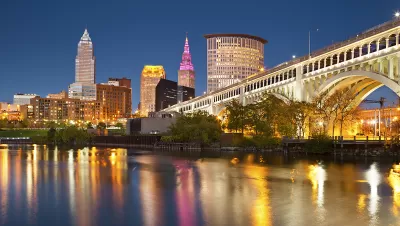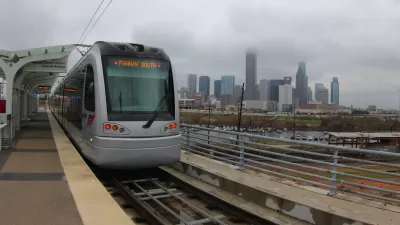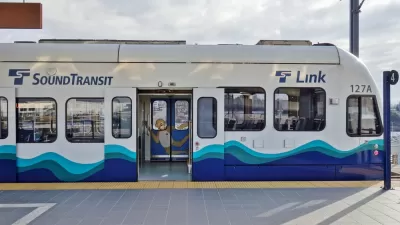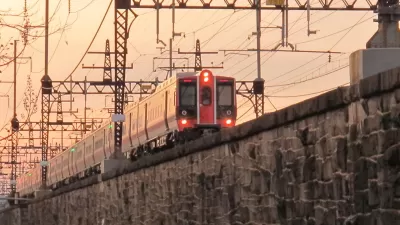The state legislature has largely reversed Gov. DeWine's cuts to public transit in the state, but advocates argue the new plan doesn't go far enough to address the needs of transit-dependent residents.

The Ohio House of Representatives has restored much of the funding that Governor Mike DeWine proposed cutting from public transit in the state, prompting optimism on the part of transit advocates who want to see more investment in the sector. Tyler Buchanan, reporting for the Ohio Capital Journal, writes that "Transportation Committee Chair Stephanie Kunze, R-Hilliard, announced the Senate’s plan allocates more money to public transportation than the House plan, with the total funding coming to nearly $70 million per year." Amanda Woodrum, a senior researcher with Policy Matters Ohio, called the increase "a solid step in the right direction," but "the amount is still much less than many advocates believe is necessary to sustain Ohio’s transit systems for the future." The state also expects some investment from the federal American Rescue Plan, which allocates $30 billion to the nation's public transportation systems.
Stu Nicholson, executive director of All Aboard Ohio, a group working to build support for public transportation, "proposes a legislative task force look into finding a long-term, dedicated source of funding for public transportation." Dave Greenspan, a former state lawmaker who now lobbies for MetroHealth System, agreed on the need for more investment in public transit, calling it a "lifeline connecting residents to jobs, shopping and health care." Environmental advocates also want to see the state reduce or eliminate the $100-$200 fees on hybrid and electric vehicles, which legislators argue supports funding transportation infrastructure that has historically relied on a gas tax.
FULL STORY: Ohio Senate plan ramps up public transit funding. Will the increase stay?

Trump Administration Could Effectively End Housing Voucher Program
Federal officials are eyeing major cuts to the Section 8 program that helps millions of low-income households pay rent.

Planetizen Federal Action Tracker
A weekly monitor of how Trump’s orders and actions are impacting planners and planning in America.

Ken Jennings Launches Transit Web Series
The Jeopardy champ wants you to ride public transit.

Opinion: Transit Agencies Must View Service Cuts as Last Resort
Reducing service could cripple transit systems by pushing more riders to consider car ownership, making future recovery even less certain.

‘Smart Surfaces’ Policy Guide Offers Advice for Building and Maintaining Urban Tree Canopies
Healthy, robust tree canopies can reduce the impacts of extreme heat and improve air quality.

New Jersey Lawsuit Targets Rent-Setting Algorithms
The state of New Jersey is taking legal action against landlords and companies that engage in what the state’s Attorney General alleges is illegal rent fixing.
Urban Design for Planners 1: Software Tools
This six-course series explores essential urban design concepts using open source software and equips planners with the tools they need to participate fully in the urban design process.
Planning for Universal Design
Learn the tools for implementing Universal Design in planning regulations.
Heyer Gruel & Associates PA
Ada County Highway District
Institute for Housing and Urban Development Studies (IHS)
City of Grandview
Harvard GSD Executive Education
Toledo-Lucas County Plan Commissions
Salt Lake City
NYU Wagner Graduate School of Public Service





























